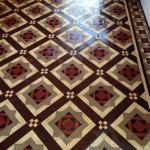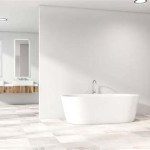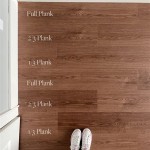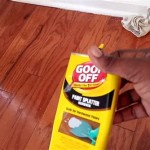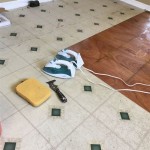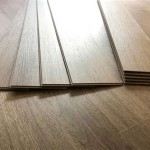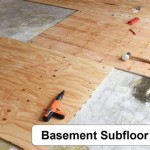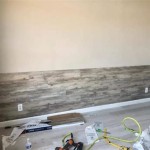Everything You Need To Know About Vapor Barriers For Laminate Flooring
When you're searching for a sturdy and economical flooring option, laminate flooring is a top-rated choice. However, to ensure its longevity and maintain its appeal, it's crucial to install a vapor barrier beneath it. A vapor barrier plays a vital role in safeguarding your laminate flooring from moisture damage, which can cause costly repairs down the road.
In this comprehensive guide, we will delve into the fundamentals of vapor barriers for laminate flooring. We'll explore their role, types, benefits, proper installation techniques, and common mistakes to avoid during installation. Armed with this knowledge, you'll be well-equipped to make informed decisions and protect your laminate flooring investment.
The Role of Vapor Barriers
The primary function of a vapor barrier is to prevent moisture vapor from seeping into your laminate flooring from the subfloor. Moisture vapor can originate from various sources, including the ground, crawlspace, or humid environments. If this moisture vapor is allowed to penetrate the flooring, it can cause the laminate to swell, buckle, or warp over time.
By installing a vapor barrier, you create a protective layer that blocks the passage of moisture vapor, safeguarding your laminate flooring from potential damage. It's particularly important in areas with high humidity levels or in homes built on concrete slabs, where moisture can easily rise from the ground.
Types of Vapor Barriers
There are two main types of vapor barriers commonly used for laminate flooring:
1. Polyethylene (PE) Film Barriers:
These are thin, inexpensive sheets of plastic that provide a reliable moisture barrier. They are readily available at most home improvement stores.
2. Self-Adhesive Membranes:
These barriers consist of a layer of adhesive on one side, making installation easier and more efficient. They offer superior moisture protection compared to PE film barriers.
Benefits of Using Vapor Barriers
Installing a vapor barrier for your laminate flooring offers numerous advantages, including:
- Prevents moisture damage: Protects laminate flooring from swelling, buckling, and warping caused by moisture vapor.
- Extends lifespan: By safeguarding against moisture damage, vapor barriers help prolong the life of your laminate flooring.
- Maintains appearance: Prevents discoloration and deterioration of the flooring, preserving its aesthetic appeal.
- Reduces repair costs: By proactively preventing moisture damage, you can avoid costly repairs and replacements.
- Improves indoor air quality: Vapor barriers help reduce mold and mildew growth, which can contribute to poor indoor air quality.
Proper Installation Techniques
To ensure the effectiveness of your vapor barrier, proper installation is crucial. Here are the steps to follow:
- Prepare the subfloor: Ensure the subfloor is clean, dry, and level before installing the vapor barrier.
- Overlapping the barrier: Unroll the vapor barrier and overlap the edges by at least 6 inches.
- Seal the seams: Use vapor barrier tape to seal the seams between the overlapped sections, creating a continuous moisture barrier.
- Secure the barrier: Use staples or nails to attach the vapor barrier to the subfloor, taking care not to puncture it.
Common Mistakes to Avoid
To avoid compromising the effectiveness of your vapor barrier, steer clear of these common mistakes:
- Skipping the vapor barrier:
Installing laminate flooring without a vapor barrier significantly increases the risk of moisture damage. - Not overlapping the barrier:
Overlapping the vapor barrier is essential to prevent moisture from seeping through the seams. - Tearing or puncturing the barrier:
Handle the vapor barrier carefully during installation to avoid tearing or puncturing it. - Installing on a damp subfloor:
Ensure the subfloor is completely dry before installing the vapor barrier and laminate flooring. - Using the wrong type of barrier:
Choose a vapor barrier specifically designed for laminate flooring to ensure compatibility.
Conclusion
Vapor barriers play a pivotal role in protecting laminate flooring from moisture damage, extending its lifespan, and maintaining its appearance. By understanding the types, benefits, and proper installation techniques of vapor barriers, you can make informed decisions to safeguard your flooring investment. Remember to avoid common mistakes during installation to ensure the effectiveness of the vapor barrier. With a properly installed vapor barrier, you can enjoy a durable and beautiful laminate floor for years to come.

What Is A Moisture Barrier And When It Needed For Flooring Inc

What Is A Moisture Barrier And When It Needed For Flooring Inc

Vapor Barrier Under Laminate Floor And Floating Problems

Does The Quiet Walk Underlayment Plastic Vapor Barrier Face Up Or Down When Installing Mp Global S Llc

What Is A Moisture Barrier And When It Needed For Flooring Inc

Ask The Contractor Things You Didn T Know About Floor Underlayment Forbes Home

Quietwalk 100 Sq Ft X 3 33 34 1 4mm Acoustical Underlayment With Vapor Barrier For All Vinyl Plank Flooring Qwlv100 The Home

Quietwalk Laminate Floor Underlayment 360 Sq Ft Sound Moisture Barrier 3 Mm For

How To Install The Moisture Barrier Over Concrete Subfloor Furniture Woodworking Wonderhowto

Quietwalk 100 Sq Ft 3 X 33 Mm Underlayment With Sound And Moisture Barrier For Laminate Engineered Floors Qw100b1lt The Home
See Also
